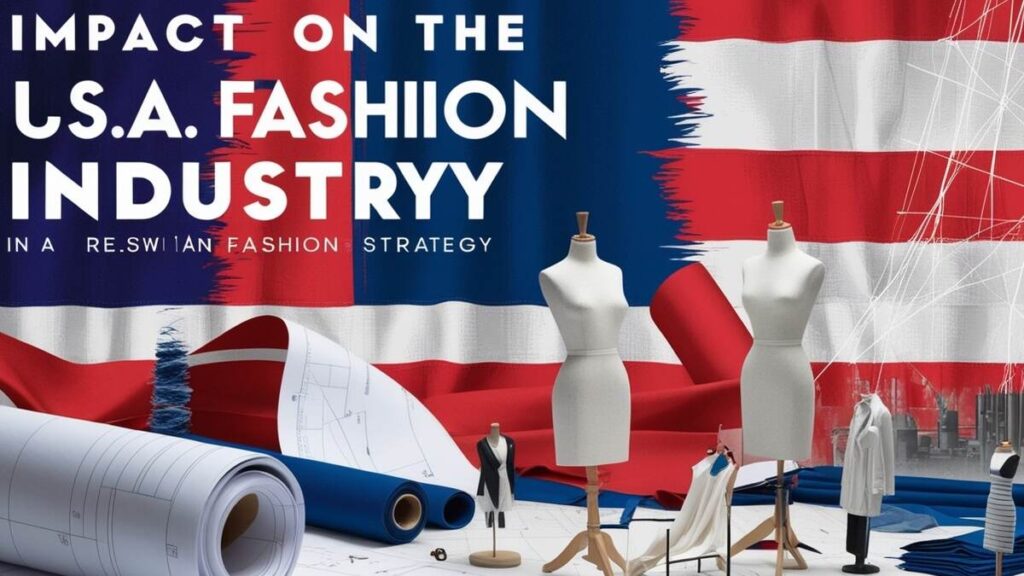Introduction
Imagine walking into your favorite clothing store only to find that prices have risen significantly. Under the Trump administration’s tariff policies, this scenario became a reality for the U.S. fashion industry. Designed to protect domestic industries and balance trade deficits, these measures sent ripples through an industry heavily relying on global supply chains.
- Introduction
- The Genesis of Tariffs Under Trump
- Immediate Impact on the Fashion Industry
- Redefining Sourcing Strategies
- Reshaping Pricing Models
- The Push Toward Domestic Manufacturing
- Innovation in Supply Chain Management
- Evolving Consumer Preferences
- Challenges Facing Small Businesses
- The Role of Policy and Advocacy
- Long-Term Impacts on the Fashion Landscape
- Conclusion
The impact of these tariffs wasn’t just economics—it changed how brands operated, sourced materials, and interacted with consumers. Whether you’re a business owner, a consumer, or simply curious about the evolving fashion landscape, understanding these shifts is essential to grasping how tariffs are reshaping the U.S. fashion industry.
The Genesis of Tariffs Under Trump
Tariffs were a cornerstone of Donald Trump’s trade policy, mainly targeting China, which accounted for a significant share of U.S. imports. The tariffs, sometimes as high as 25%, encouraged domestic manufacturing and reduced reliance on foreign suppliers.
These policies shocked the U.S. fashion industry, which is heavily reliant on affordable imports. Companies importing everything from fabric to finished apparel faced unexpected cost hikes, which led to immediate concerns about pricing, sourcing, and competitiveness.
Immediate Impact on the Fashion Industry
The effects of these tariffs were almost instantaneous. Brands saw their profit margins shrink as costs for raw materials and finished goods skyrocketed. Supply chains, finely tuned to efficiency, were suddenly thrown into disarray.
For instance, a small New York-based fashion brand that sourced materials from China reported a 15% increase in production costs within months of the tariffs’ implementation. The company scrambled to adjust prices while retaining its customer base, showing how these policies impacted smaller players.
Redefining Sourcing Strategies
One of the most significant shifts was a move away from China as a primary sourcing hub. Companies began exploring alternative markets, such as Vietnam, Bangladesh, and India, to mitigate costs. While this diversification brought new opportunities, it also introduced challenges like ensuring quality and establishing reliable logistics.
Take, for example, a U.S. footwear company that transitioned its manufacturing to Vietnam. While the move reduced tariff-related expenses, it required a complete overhaul of their supply chain and quality control processes. The effort proved worthwhile, as the brand managed to sustain profitability in a challenging environment.
Reshaping Pricing Models
When costs rise, someone has to pay the price—literally. For many brands, this meant passing the burden to consumers through higher retail prices. However, in a competitive market, this strategy wasn’t always feasible.
Luxury brands, with their higher profit margins, absorbed these costs more comfortably than fast fashion retailers, whose low prices are a key selling point. Some companies opted for discounts and promotions to retain customers, temporarily sacrificing profits to maintain loyalty. This balancing act became a defining feature of how tariffs reshaped the U.S. fashion industry.
The Push Toward Domestic Manufacturing
The tariffs also revived interest in “Made in USA” initiatives. Brands began exploring domestic manufacturing to sidestep international trade complications. However, high labor costs and outdated infrastructure posed significant hurdles.
One inspiring example is a Los Angeles-based startup that launched a locally produced denim line. While the process was costly, the brand marketed its American-made ethos, gaining traction among consumers who valued sustainability and local production.
Innovation in Supply Chain Management
To adapt to these challenges, the U.S. fashion industry began embracing technology to optimize supply chains. Advanced tools such as AI, blockchain, and predictive analytics became essential for managing costs, tracking shipments, and forecasting demand more accurately.
For instance, a mid-sized apparel brand utilized AI-driven platforms to identify the most cost-effective sourcing options. Predictive analytics allowed the company to forecast consumer trends, reducing overproduction and inventory waste. Blockchain technology also played a role in ensuring transparency, particularly for brands committed to ethical practices. By integrating these tools, businesses mitigated the impact of tariffs and gained a competitive edge in a rapidly evolving market.
Another innovative solution emerged as on-demand production models. Instead of mass-producing inventory, brands shifted to manufacturing items only after receiving customer orders. This strategy minimized waste and upfront costs, marking a significant change in how external pressures reshape the U.S. fashion industry.
Evolving Consumer Preferences
Tariffs impacted businesses and influenced consumer behavior. Shoppers began paying closer attention to price tags and brand values. Sustainability and ethical practices, already growing trends, gained even more importance as brands justified price increases by highlighting fair trade and environmentally friendly practices.
A Boston-based apparel company capitalized on this shift by promoting its sustainable production methods and transparent supply chain. The brand’s marketing campaigns emphasized the higher cost of ethical sourcing and production, which resonated with its eco-conscious customer base. This alignment of values helped the company retain loyalty even as prices increased, illustrating how tariffs indirectly encouraged a deeper connection between consumers and brands.
Challenges Facing Small Businesses
The impact of tariffs was particularly harsh on small businesses. Unlike large corporations with extensive resources, small and medium enterprises (SMEs) struggled to absorb cost increases or relocate production quickly. Their limited capital and supply chain flexibility made them vulnerable.
A family-run apparel boutique in Chicago faced a stark choice: raise prices or risk shutting down. To stay afloat, they focused on niche products, emphasizing quality and craftsmanship. While this strategy allowed them to cater to a more targeted audience, it also highlighted the uneven playing field created by tariffs.
Government assistance programs, such as tariff exclusion requests, offered some relief, but navigating bureaucratic hurdles was challenging. Advocacy groups were critical in supporting these smaller players, lobbying for more accessible aid, and pushing for reforms.
The Role of Policy and Advocacy
Recognizing the strain on industries, trade organizations and advocacy groups mobilized to mitigate the effects of tariffs. Groups like the American Apparel & Footwear Association (AAFA) actively lobbied for tariff relief and policy changes to support the industry.
One notable success was tariff exclusion lists, which allowed specific items to bypass additional duties. However, the complex process required significant resources, leaving smaller businesses at a disadvantage. Collaborative efforts between brands and trade organizations highlighted the importance of collective action in reshaping the U.S. fashion industry amidst evolving trade policies.
Long-Term Impacts on the Fashion Landscape
The legacy of Trump-era tariffs continues to shape the industry, even under subsequent administrations. Sourcing diversification, domestic production efforts, and innovative supply chain strategies are no longer temporary fixes—they’ve become integral to how brands operate.
For instance, a major athletic wear company shifted part of its production to Latin America, a previously overlooked region. This move reduced tariff exposure and strengthened regional trade ties. Similarly, the emphasis on sustainable practices has transformed from a trend into a necessity as consumers demand greater brand accountability.
The long-term implications of these tariffs underscore the resilience and adaptability of the U.S. fashion industry, which has turned challenges into opportunities for growth and innovation.
Conclusion
The Trump administration’s tariffs catalyzed change, forcing the U.S. fashion industry to reevaluate its strategies and operations. Every facet of the industry has been affected, from sourcing to pricing, creating a new landscape defined by resilience, innovation, and adaptability. While the road hasn’t been easy, these changes have positioned the industry to thrive in an increasingly unpredictable global market.
As brands continue to navigate these challenges, their ability to innovate and align with consumer values will determine their success. Ultimately, the tariffs served as a stark reminder of the interconnected nature of global trade and the need for agility in an ever-evolving marketplace.


